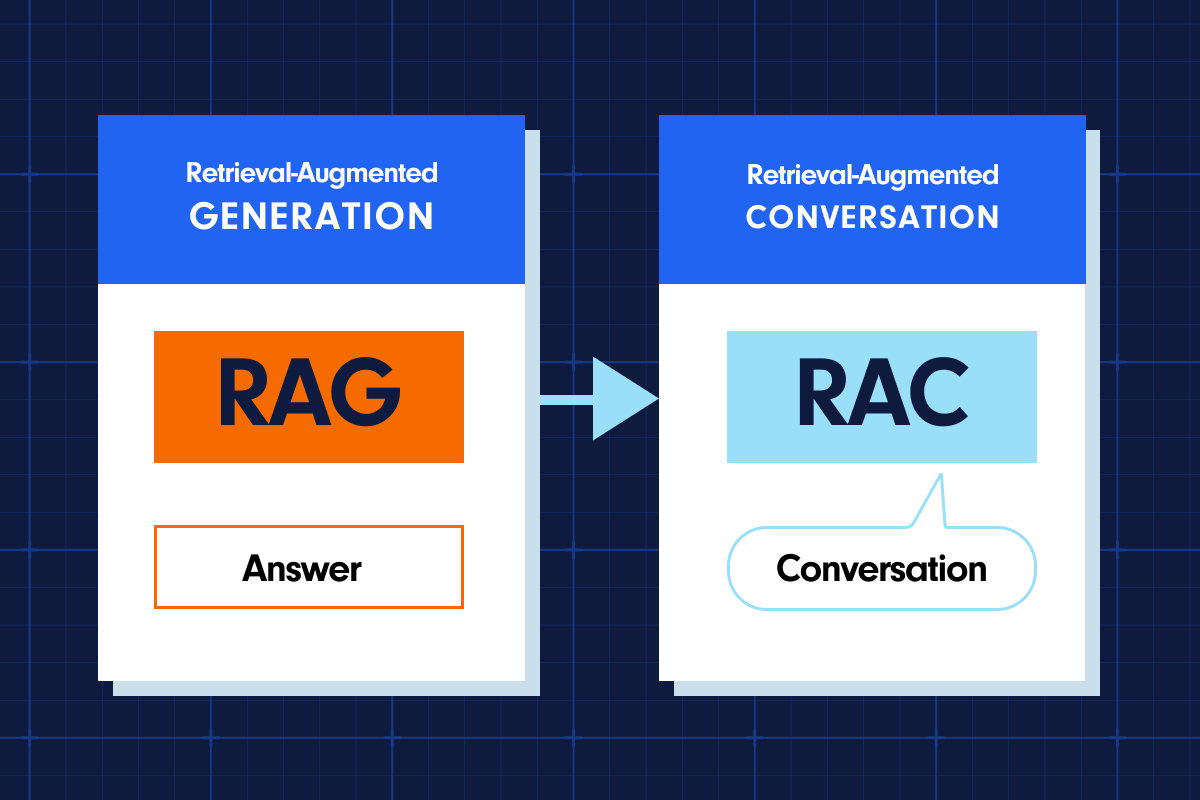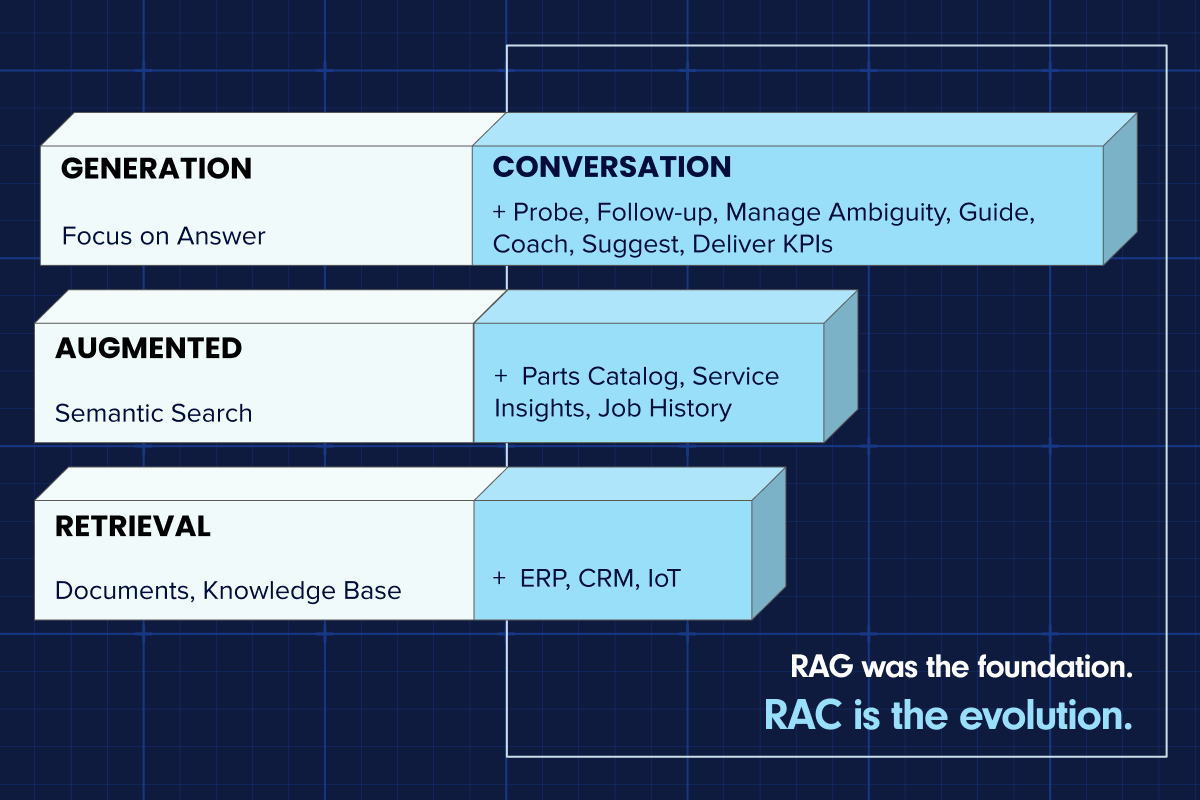Generative AI is one of the most groundbreaking technologies in recent years, fueling innovations in every field from manufacturing to service. It’s also one of the fastest-evolving technologies. Here’s a primer on the AI concepts you need to understand in the context of service and the customers you support.
Bookmark this generative AI glossary — and have it ready for your next meeting. We won’t tell anyone.
General
- Bias: Unfair or skewed judgments, decisions, or outcomes in machine learning models or algorithms. Bias can arise from biased training data or the design of the algorithm itself and can result in discriminatory or unfair behavior, particularly in areas like automated decision-making, lending, and hiring.
- Chatbot: A computer program or AI application that simulates human conversation through text or speech. Chatbots can be used for various purposes, including customer support, information retrieval, and virtual assistants. They use natural language processing techniques to understand and respond to user queries or commands.
- ExpertSync: Aquant proprietary process by which we datafy the knowledge of your seasoned experts into the diagnostic AI solutions. ExpertSync has proven to elevate the quality of problem-solving in service through the unique combination of Aquant AI drawing from a specifically curated mix of historical data, unstructured technician notes, and validated expert solutions.
- Generative AI: A subset of artificial intelligence that focuses on creating or generating new content, such as text, images, music, or other media. Generative AI models, like GPT-4 and GANs (Generative Adversarial Networks), have the ability to produce creative and realistic content based on patterns and data they’ve been trained on.
- Generative Pre-Trained Transformer (GPT): A family of large-scale language models developed by OpenAI. GPT models are pre-trained on vast amounts of text data and can be fine-tuned for various natural language understanding and generation tasks. GPT-4, for example, is known for its ability to generate human-like text and perform a wide range of NLP tasks.
- Horizontal AI: Artificial intelligence technologies and applications with broad and general functionality across various industries and use cases. These AI systems are not industry-specific and can be applied horizontally to address many problems. For instance, NLP tools used in service, finance, e-commerce, and other sectors are considered horizontal AI.
- Large Language Model (LLM): An artificial intelligence model trained on massive datasets to understand and generate human language. These models, such as GPT-4o and GPT-4o, are known for developing coherent and contextually relevant text, making them useful in various natural language processing tasks.
- Natural Language Processing (NLP): A field of artificial intelligence focusing on the interaction between computers and human language. NLP technology enables computers to understand, interpret, and generate human language, making it valuable for tasks like language translation, sentiment analysis, and chatbots.
- Service Language Processing (SLP): Aquant’s unique NLP engine, which is designed to read service language and identify observations/symptoms and solutions described in free text.
- Vectors: Numerical representations of words in a high-dimensional vector space. These representations capture semantic relationships between words, allowing algorithms to understand the meaning and context of words based on their proximity in the vector space. Word vectors are fundamental in natural language processing tasks like word similarity, sentiment analysis, and machine translation. They are typically generated using techniques like Word2Vec or GloVe.
- Vertical AI: Artificial intelligence systems and applications for specific industries or niches. These AI systems are highly specialized and optimized to address particular tasks, challenges, or workflows within a specific vertical market. For example, vertical AI solutions may include healthcare AI for medical diagnosis or manufacturing AI for optimizing production processes.
Data & Accuracy
- Data Cleansing: Identifying and correcting errors, inconsistencies, and inaccuracies in a dataset. This includes removing duplicate records, handling missing values, and rectifying formatting issues to improve data quality. It is also known as data cleaning or data scrubbing.
- Data Ingestion: Collecting, importing, and preparing data for machine learning or data analysis applications. It involves acquiring data from various sources, transforming it into a suitable format, and storing it in a data repository for further analysis.
- Data Integrity: The accuracy, consistency, and reliability of data throughout its lifecycle. It ensures that data is not corrupted, altered, or compromised, maintaining its quality and trustworthiness for analysis and decision-making.
- Data Validation: A set of checks and procedures to ensure data is accurate, consistent, and compliant with predefined criteria or standards. It involves verifying data quality through various validation techniques, such as cross-validation, to assess model performance or data reliability.
- Hallucinations: A situation where a model generates incorrect or fabricated information in its output. It occurs when the model produces text not based on factual or accurate data, leading to misleading or erroneous results.
- Parameters: Internal variables or weights a machine learning model uses to make predictions or decisions based on input data. These parameters are learned from training data and are essential for the model’s ability to generalize and perform well on new, unseen data.
- Prompt Engineering: Designing and crafting specific instructions or queries (prompts) to elicit desired responses from natural language processing (NLP) models. It involves formulating prompts that guide the model’s output toward the intended information or behavior.
- Reinforcement Learning: A machine learning paradigm in which an agent learns to make decisions or act in an environment to maximize a cumulative reward. The agent learns through trial and error, adjusting its actions based on feedback from the environment. This approach is commonly used in applications like game playing, robotics, and autonomous systems.
Ethics
- Guardrails: A set of predefined rules, constraints, or ethical guidelines that are put in place to guide the development, deployment, and usage of artificial intelligence systems. These guardrails serve as boundaries or limits to ensure that AI technologies are used responsibly and ethically. They help prevent AI systems from engaging in harmful or undesirable behaviors and promote transparency, fairness, and accountability in AI applications. Guardrails may include guidelines for addressing bias and discrimination in AI models, ensuring data privacy and security, and complying with legal and regulatory requirements. They are an essential component of AI governance and help organizations and developers navigate the ethical and societal implications of AI technology.
- Privacy: Protecting individuals’ personal information and data when AI systems are involved. It ensures that AI applications and data processing activities adhere to privacy laws and regulations. Measures may include data anonymization, consent management, and access controls to safeguard sensitive information.
- Security: Protecting AI systems and their data from unauthorized access, breaches, and cyber threats. It encompasses measures such as encryption, access controls, secure coding practices, and regular security audits to mitigate risks associated with AI deployment. Security is crucial to prevent AI systems from being exploited or compromised.
Aquant’s Service Co-Pilot offers a distinct edge over other generative AI tools because of its deep understanding of service and the quality of data it collects. Request a demo to learn more about how these terms and tools fit into your AI journey.
Recent Posts
-

How Businesses Can Avoid Becoming Part of Gartner’s Predicted 40% Failure Rate in Agentic AI Projects
Read More »July 14, 2025 Assaf Melochna







